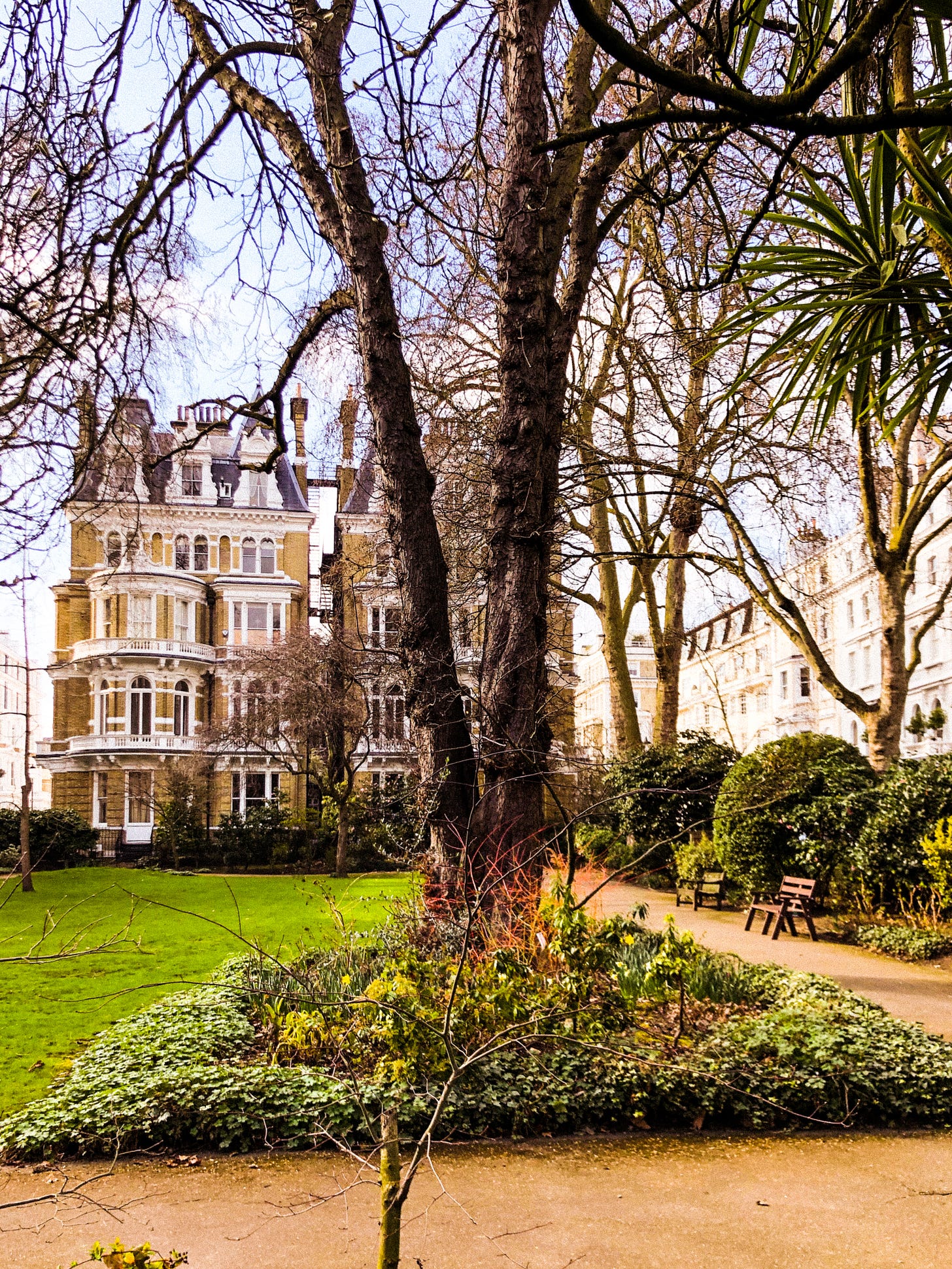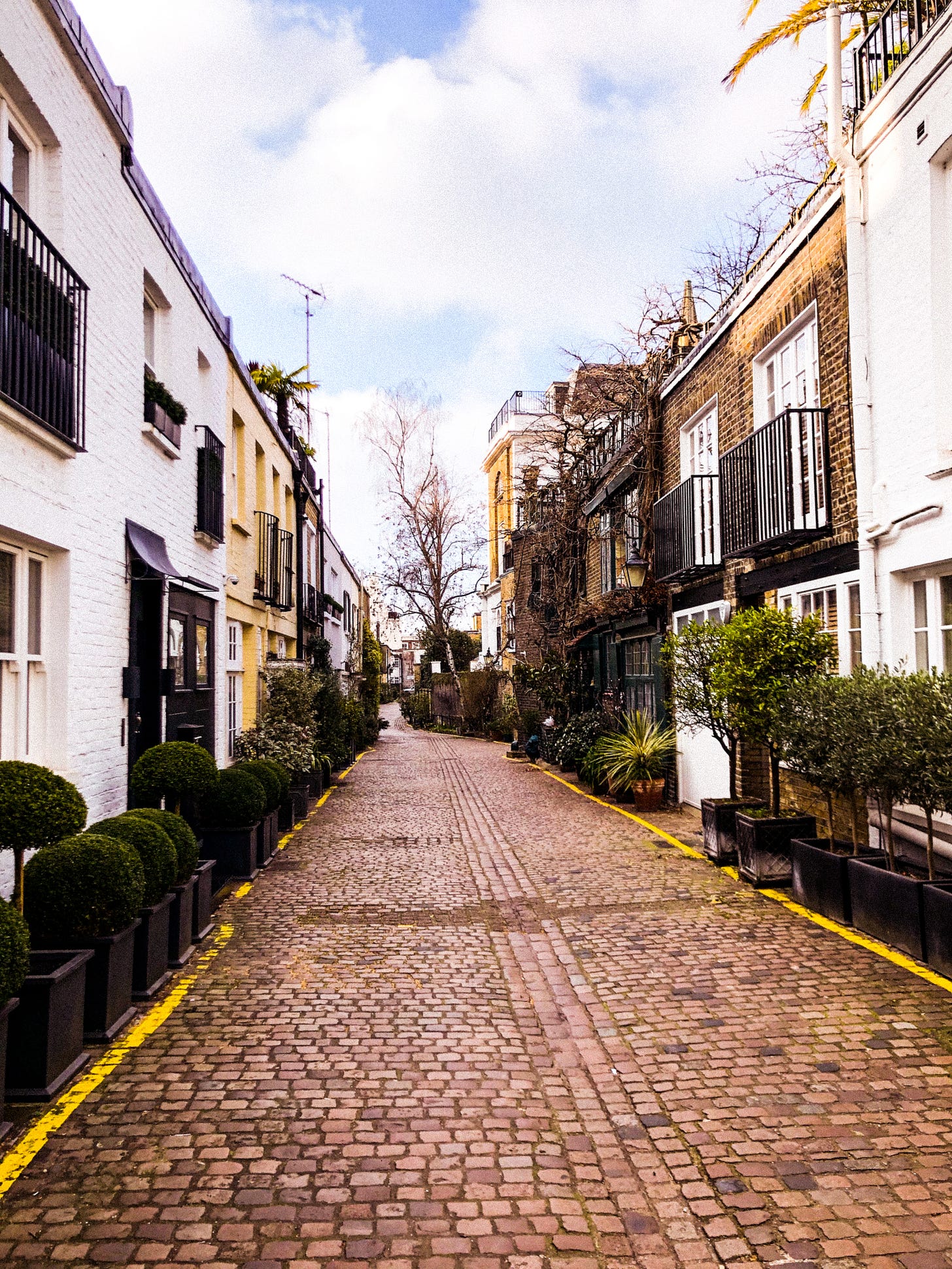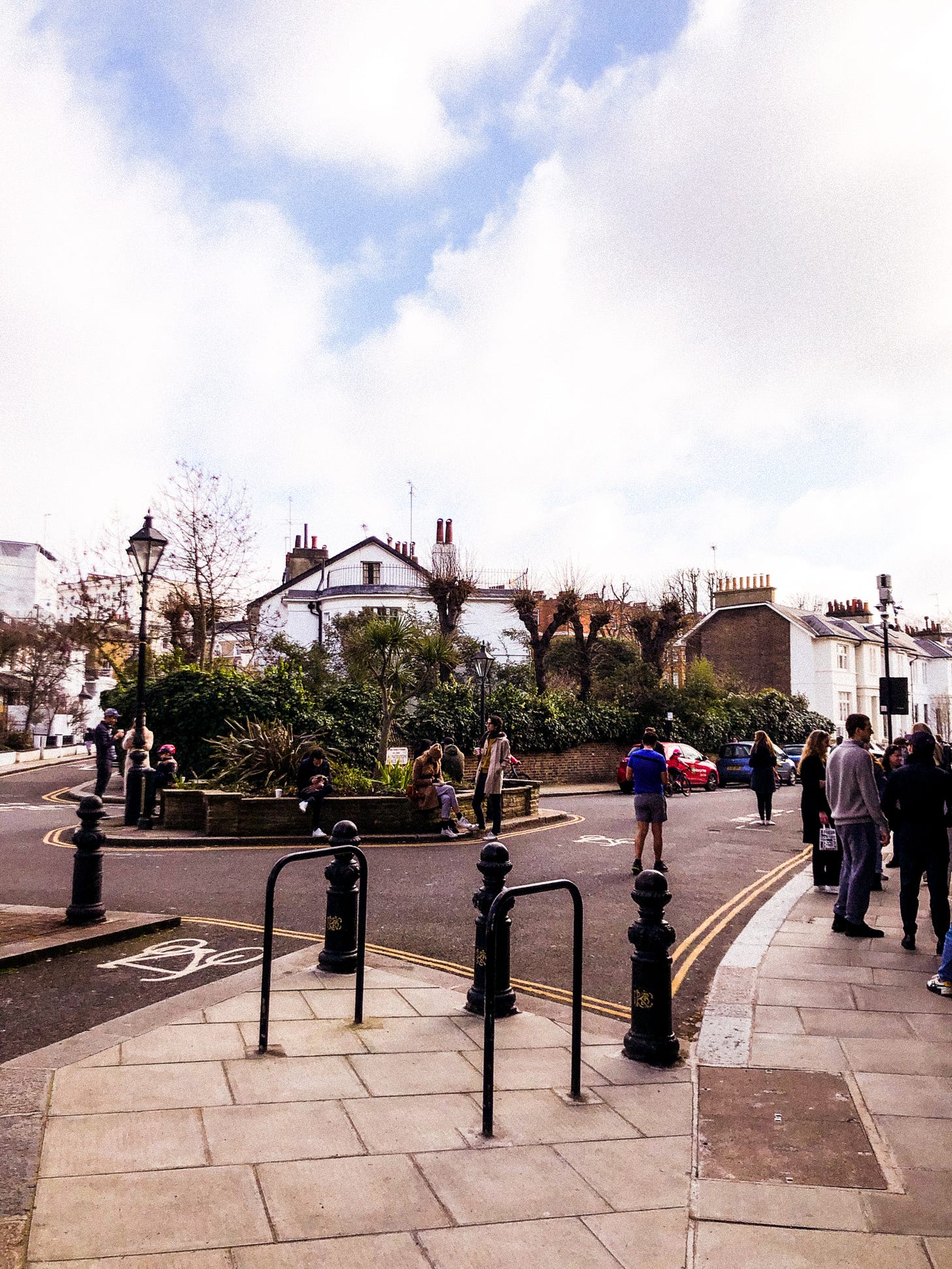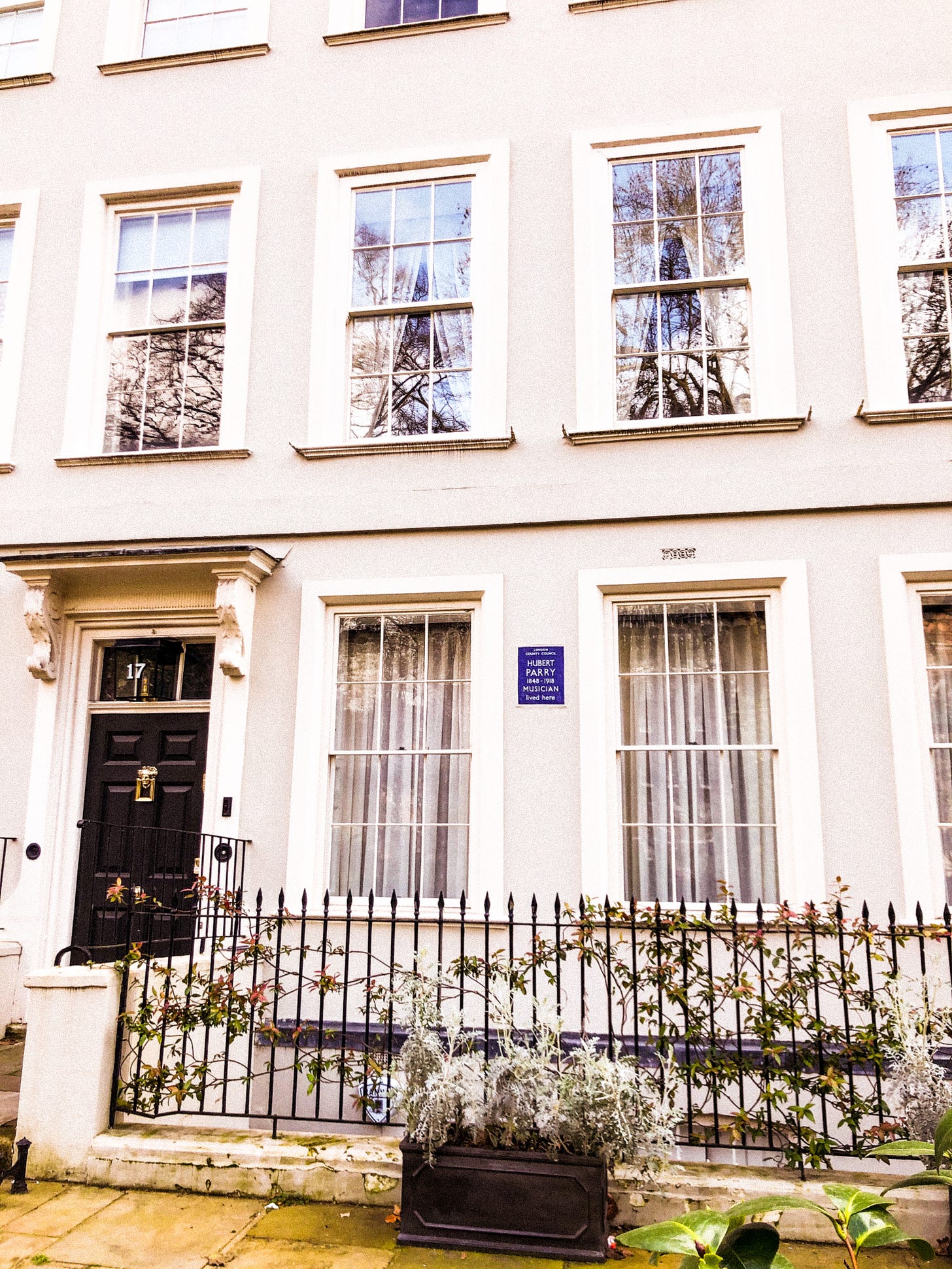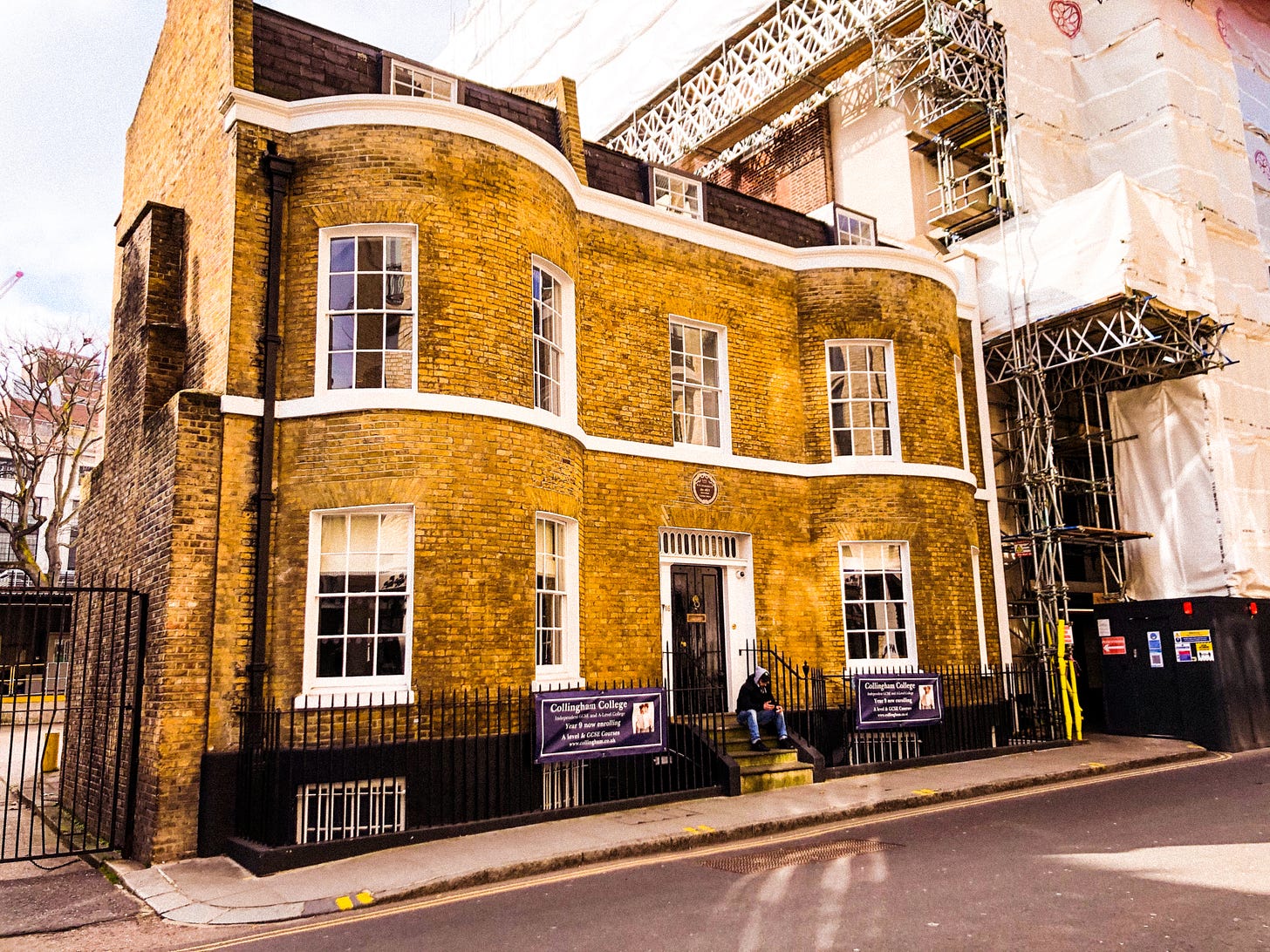A far cry from Kensington
How the Royal Borough has changed, from the days of William III, through JS Mill, Parry and Thackeray, to today
I normally explore the weird and wonderful in the English landscape and write about it every couple of weeks. At the moment I’m confined to discovering the delight in my immediate surroundings, or in memory. If this sounds like something that would interest you, why not subscribe? Or, if you’re already subscribed, consider recommending to a friend to whom it might also bring joy?
Muriel Spark’s strange book of the same name is about the Kensington that was: crooked characters rooming in tall boarding-houses, chaotic lives with a touch of the occult, prone to exclaim that the whole business is, “a far cry, a far cry from Kensington.”
There are a few such paint-peeling stuccoed blocks facing onto main roads today. But off these thoroughfares, it is an oligarch’s playground. The frequent blue plaques read like an order of merit: Ezra Pound, Hubert Parry, Lord Leighton. And yet they are primarily artists, writers, musicians: the creative petty bourgeois of the last two hundred years, who were able to lead a civilised life here when Kensington was still skirted by fields. Between the courtiers of William III and the present scions of privilege, there was a window when Kensington was inhabited by distinguished, but still relatively normal, people.
We start heading north, past the house of ‘controversial’ writer Ford Madox Ford, and the huge futuristic glass edifice that is Holland Park School, the ‘socialist Eton’. In Holland Park itself, the house is unfortunately covered up by unsightly scaffolding, only the lines of the WWII-bombed east wing visible in the ground. Former home of the Barons Holland, and a Whig haunt during the 19th century, William III stayed here to recuperate from his asthma before moving to nearby Kensington Palace — thus moving his court, and setting Kensington on the path to what it is today. We sit in the garden for a bit, surrounded by geometric box-hedges.
On the other side of the park, we pass a mock French-mediaeval mansion, apparently once home to the actor Richard Harris and now the guitarist Jimmy Page. It seems appropriate for Dumbledore have lived to in a house where every window is stained glass. Privacy, though perhaps rather less fun for the inhabitants.
Around the corner is the home of Lord Leighton, a sturdy British painter of the pre-Raphaelite school. A similar structure of solid redbrick, except this time with an onion dome and minaret. He was the bearer of the shortest-lived peerage in history, dying just one day after it was awarded. He was a keen traveller and built the Arab Hall inside the house to show off his impressive tile collection. In normal times, this is open to visitors as the Leighton House Museum.
We pass through several garden squares in varying states of wildness. Edwardes Square is a veritable thicket, impenetrable even to the naked eye, populated by tall spindling trees and obscured by thick hedges. A long greenhouse and keeper’s cottage suggests a glimpse of the well-kept roses within. An Act of Parliament once mandated that residents sweep their doorsteps every morning before 9am. The Frenchman who built it, Louis Leon Changeur, was a suspected French spy and rumours abounded he had built the square to house a French garrison, none of which turned out to be true. GK Chesterton once lived here, Changeur perhaps providing the inspiration for his book ‘the Napoleon of Notting Hill.’
Looping back through more salubrious squares, though none quite as impressive, we pass by wedding-cakey mansion blocks and creeper-grown mews. At the top of Launceston Place covid has been forgotten; people gather and wait around for coffees, talking and laughing, in a queue for a bakery at least fifty people deep. People in Barbours and athleisure. Kensington has the highest density of people that work in finance of any borough in England. At least one small business is profiting!
The final stop is the crowning glory: Kensington Square, dotted with a roll call of blue plaques. Hubert Parry and John Stuart Mill are neighbours; their dates overlap — I have no idea if they lived there contemporaneously but I like to imagine the young Hubert bounding chirpily out the door, seeing the frizzled old grandad Mill in the front garden nextdoor.
On the corner with Young St is a handsome double-breasted house, now overshadowed by the massive former Barkers of Kensington department store, bearing the name of William Thackeray. Apparently he once hosted Charlotte Bronte for dinner here, but was so bored by the conversation he left to go to his club. He was her literary hero, having dedicated Jane Eyre to him. Now, in these tall houses, only unnamed people can afford to live.
We finish with a wander over to Kensington Gardens, squinting at the Albert Memorial up close, trying to read the names in the glittering sun. Then to rest on one of the large felled tree trunks while it seems all London goes by.
I hope you enjoyed the return to this week’s more normal style update! Where are you wandering? Please leave a comment, add to the map or let me know on Twitter!
If you enjoyed reading, I’d really appreciate if you’d consider subscribing — or, even better, sharing with a friend!
Sincerely,
Ruth









